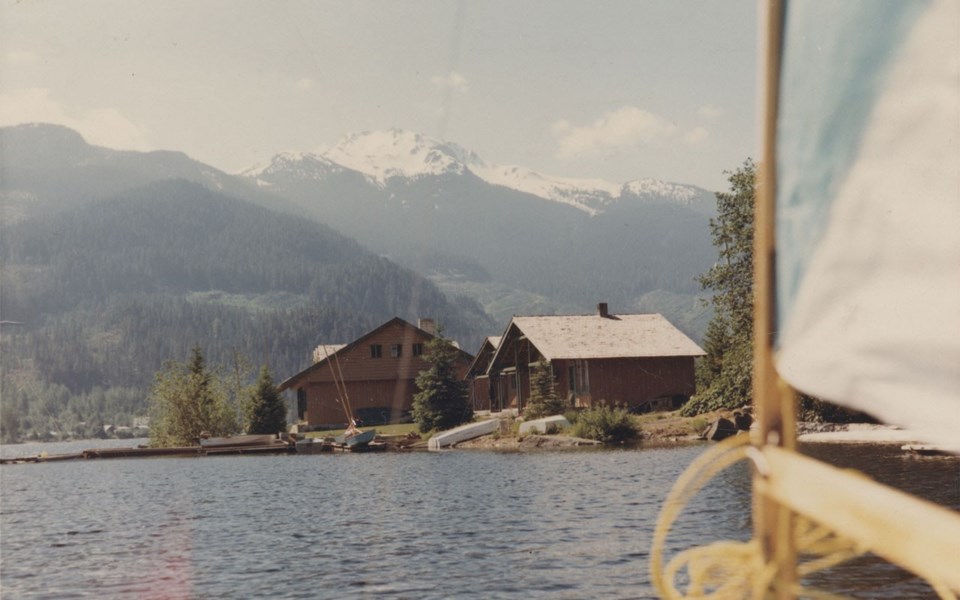Every so often, we get to take history out of the museum and share Whistler's past at events around town. This weekend, we'll be attending the Alta Lake Road Block Party held at The Point, and so for the past few days, we've been gathering together any information we have about the neighbourhood.
The history of Alta Lake Road is possibly one of the most thoroughly documented neighbourhood histories we have at the museum. Florence Petersen, one of the founders of the Whistler Museum & Archives Society, even wrote a book entitled The History of Alta Lake Road, which included both the history of the area and a detailed narrative of each individual lot from 1925 to 2006, including her own. (If you'd like to see a copy, come to the block party on Saturday, Aug. 17 from 12 to 4 p.m., or visit us at the museum.)
The Alta Lake Road of today roughly follows the path of a section of the Pemberton Trail. In 1858, a Joseph McKay and William Downie were commissioned to plot an alternate trade route between Vancouver and the gold fields of the Cariboo region. The route went past Alta Lake and, though the grand ambitions of the trail as a trade and cattle route were never fulfilled, it was the path taken by some of the early settlers of Alta Lake, including John Millar, Alex and Myrtle Philip, and Grace Woollard.
The Pemberton Trail remained the only direct route from the coast to Alta Lake until 1914, when the Pacific Great Eastern Railway reached the area. In 1891, a company was incorporated with the intention of building a railway from North Vancouver to Pemberton. A feasibility report for the project was published in 1909 by the Howe Sound Pemberton Valley and Northern Railway, which also began acquiring land along the Pemberton Trail as the train was to follow a similar (if less steep) route. Nineteen kilometres of track had been completed before the money ran out. In 1912, the PGE took over the project and resumed construction.
Some of the land along Alta Lake that the railway had acquired was subdivided into lots and put up for sale in 1925. Summer cottages soon joined Rainbow Lodge and Harrop's Tea Room (today, the site of The Point) along the western shore of the lake. Not all of the lots were sold at the time, and in 1956, the remaining lots were sold for a starting bid of $350. These lots still make up the Alta Lake Road neighbourhood today.
As development and forestry increased in the area, the Pemberton Trail by Alta Lake was widened and frequently used by logging trucks. The "road" ran between the lake and Millar Creek (in today's Function Junction), giving automobiles summer access to the west side of Alta Lake. According to Petersen, the Alta Lake Road we know today was constructed in 1965, branching off of Highway 99, running around the south end of Alpha Lake, and joining the Pemberton Trail road. This early road was made wide enough for two-way traffic and went as far north as Rainbow Lodge. The road was extended to join Rainbow Drive in Alpine Meadows in 1972 and, some time later, was paved.
Though there have been more changes to Alta Lake Road in the past few decades than just paving, the area still plays a large role in discussions of Whistler's past. Many of the houses today bear little resemblance to their summer cottage predecessors, but others harken back to the years when visitors were drawn to the area for the fishing rather than the snow.




